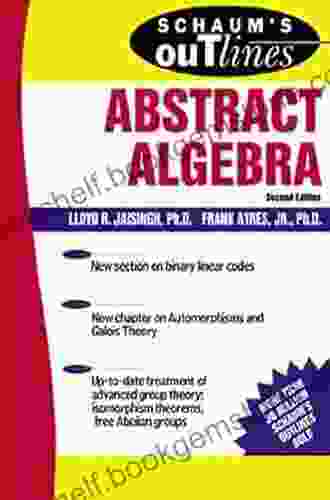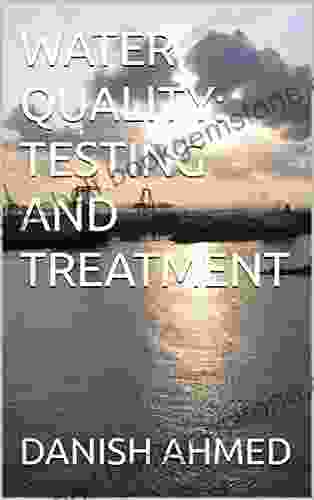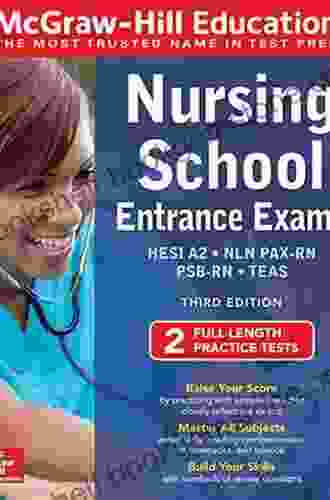Fundamentals of Technical and Business Writing: A Comprehensive Guide

Effective written communication is crucial in both technical and business settings. Technical writing involves conveying complex technical information clearly and concisely, while business writing focuses on communicating business-related information in a persuasive and professional manner. This comprehensive guide will delve into the fundamentals of technical and business writing, providing a roadmap for professionals and students who aspire to master these essential writing skills.
Technical writing is the art of presenting technical information to a specific audience, typically comprising subject matter experts, engineers, or scientists. It is used in various fields, including engineering, software development, manufacturing, and healthcare. The primary goal of technical writing is to inform, instruct, or explain complex technical concepts, processes, or systems.
Business writing encompasses a wide range of written communication used in business contexts, including emails, memos, reports, proposals, and presentations. Its purpose is to convey business-related information, persuade readers, and facilitate decision-making. Business writing often involves persuasive elements, such as presenting arguments, analyzing data, and making recommendations.
5 out of 5
| Language | : | English |
| File size | : | 7434 KB |
| Text-to-Speech | : | Enabled |
| Screen Reader | : | Supported |
| Enhanced typesetting | : | Enabled |
| Print length | : | 25 pages |
| Lending | : | Enabled |
Technical writing follows specific styles to convey information effectively. Common styles include:
- Instructional: Provides step-by-step instructions for performing a task or operating equipment.
- Descriptive: Describes technical concepts, systems, or processes in detail.
- Comparative: Compares different technical approaches, products, or solutions.
- Analytical: Analyzes technical data, draws s, and makes recommendations.
Business writing encompasses various styles appropriate for different communication purposes:
- Direct: Presents information concisely and directly, often in an email or memo format.
- Indirect: Presents information more formally and persuasively, commonly used in reports or proposals.
- Persuasive: Aims to convince the reader to take a specific action or adopt a viewpoint.
- Negotiative: Facilitates discussions and agreements between parties, often used in contracts or business negotiations.
Both technical and business writing typically follow a defined structure:
- : Introduces the topic, provides background information, and states the purpose of the document.
- Body: Presents the main content, supporting details, and evidence to support the thesis or argument.
- : Summarizes the key points, restates the thesis or argument, and provides closing remarks.
- Use clear and concise language: Avoid technical jargon and use simple, direct language that readers can easily understand.
- Organize information logically: Structure your writing to guide readers through complex concepts, using headings, subheadings, and bullet points.
- Use visuals effectively: Incorporate diagrams, charts, and images to enhance understanding and clarify complex information.
- Revise and edit: Carefully review your writing to ensure accuracy, clarity, and completeness.
- Know your audience: Identify the target audience and tailor your writing style and tone accordingly.
- Use persuasive techniques: Present arguments, provide evidence, and address counterarguments to persuade readers.
- Proofread carefully: Eliminate errors in grammar, spelling, and punctuation to maintain a professional image.
- Format your document appropriately: Use headings, fonts, and white space to enhance readability and professionalism.
- Overusing technical jargon: Avoid technical terms that readers may not understand. Use clear, non-technical language whenever possible.
- Lack of organization: Present information in a logical and structured manner to guide readers through complex concepts.
- Inaccurate or incomplete information: Ensure the accuracy and completeness of your writing to maintain credibility and avoid misunderstandings.
- Typos and grammatical errors: Proofread your writing carefully to eliminate errors and present a professional document.
- Lack of clarity: Avoid vague or ambiguous language. Use specific, concrete details and examples to convey your message clearly.
- Active voice: The subject of the sentence performs the action (e.g., "The engineer designed the bridge").
- Passive voice: The subject of the sentence receives the action (e.g., "The bridge was designed by the engineer").
In technical and business writing, active voice is generally preferred as it is more direct and concise. Passive voice can be used for emphasis or to avoid assigning blame.
- Precision: Use specific, concrete language to convey your message accurately.
- Concision: Eliminate unnecessary words and phrases to enhance readability and clarity.
- Tone: Adapt your tone to the purpose of the document and the target audience. Use a formal tone for technical documents and a persuasive or professional tone for business documents.
- Language: Use language that is appropriate for the intended audience and context. Avoid slang, colloquialisms, or technical jargon unless necessary.
Mastering the fundamentals of technical and business writing is essential for effective communication in these fields. By understanding the distinct styles, structures, and best practices involved, writers can create clear, concise, and persuasive documents that convey complex information and achieve their intended purpose. This comprehensive guide provides a roadmap for professionals and students seeking to enhance their written communication skills and succeed in their respective domains.
5 out of 5
| Language | : | English |
| File size | : | 7434 KB |
| Text-to-Speech | : | Enabled |
| Screen Reader | : | Supported |
| Enhanced typesetting | : | Enabled |
| Print length | : | 25 pages |
| Lending | : | Enabled |
Do you want to contribute by writing guest posts on this blog?
Please contact us and send us a resume of previous articles that you have written.
 Best Book
Best Book Page Flip
Page Flip Bookshelf
Bookshelf Literary loom
Literary loom Chapter
Chapter Bookish
Bookish PageTurner
PageTurner Bibliophile
Bibliophile Story
Story Inkwell
Inkwell Bookworm
Bookworm Labyrinth
Labyrinth Plot Twist
Plot Twist Prose
Prose Paperback
Paperback Storyteller
Storyteller Sanctuary
Sanctuary Fiction
Fiction Reading
Reading Chronicle
Chronicle Read
Read Judy Lipson
Judy Lipson Culture Smart
Culture Smart Pam Coburn
Pam Coburn Key Notes
Key Notes Nic Oatridge
Nic Oatridge Daryl Balfour
Daryl Balfour Paul Watson
Paul Watson Don L Gates
Don L Gates Sigurd F Olson
Sigurd F Olson Lori Haskins Houran
Lori Haskins Houran Chris Fagan
Chris Fagan Debbie S Miller
Debbie S Miller Gregory J Privitera
Gregory J Privitera Robert Caprio
Robert Caprio Frank Ayres
Frank Ayres Brian Andrews
Brian Andrews Craig M Kershaw
Craig M Kershaw David Mcilroy
David Mcilroy Greg Jacobs
Greg Jacobs Russell Blake
Russell Blake Daniel Farcas
Daniel Farcas Test Masters
Test Masters Mitt Romney
Mitt Romney Wolfedale Press
Wolfedale Press Thad Vogler
Thad Vogler Rick Steves
Rick Steves Tim Wharnsby
Tim Wharnsby Nicky Pellegrino
Nicky Pellegrino Jeanne St James
Jeanne St James Tao Le
Tao Le Michael Vlessides
Michael Vlessides Blair Braverman
Blair Braverman Ted Dorsey
Ted Dorsey Schoolhouse Heaven
Schoolhouse Heaven Arden Rembert Brink
Arden Rembert Brink Lila Z Rose
Lila Z Rose Dinesh Kumar Goyal
Dinesh Kumar Goyal Big Daddy Ozone
Big Daddy Ozone Jude Deveraux
Jude Deveraux Tom Palmer
Tom Palmer John R Morgan
John R Morgan Blether Travel Guides
Blether Travel Guides Jay Griffiths
Jay Griffiths Gail Fay
Gail Fay The Total Travel Guide Company
The Total Travel Guide Company Shawn Inmon
Shawn Inmon R Bruce Richardson
R Bruce Richardson Peter Barber
Peter Barber Wilfred Cude
Wilfred Cude Jim Harrison
Jim Harrison Asrai Devin
Asrai Devin Terry Palechuk
Terry Palechuk Paul Oliver
Paul Oliver Tim Severin
Tim Severin Penelope Douglas
Penelope Douglas Stephen Haddelsey
Stephen Haddelsey Jason E Portnof
Jason E Portnof Jerry A Pattengale
Jerry A Pattengale Brent J Burrows Ii
Brent J Burrows Ii Michael Tefula
Michael Tefula Leslie Thomas
Leslie Thomas Nancy Roe Pimm
Nancy Roe Pimm Joeanna Rebello Fernandes
Joeanna Rebello Fernandes Stephen J Pyne
Stephen J Pyne Tim Brown
Tim Brown Richard Bronson
Richard Bronson Barry Eisler
Barry Eisler Dk Eyewitness
Dk Eyewitness Rets Griffith
Rets Griffith John Hersey
John Hersey Roberta Raigh Pryor
Roberta Raigh Pryor Illustrated Edition Kindle Edition
Illustrated Edition Kindle Edition Tina Cho
Tina Cho Sacha Black
Sacha Black Simon Winchester
Simon Winchester Levison Wood
Levison Wood 1st Edition Kindle Edition
1st Edition Kindle Edition Sergio Rassu
Sergio Rassu Wendy Francis
Wendy Francis Sybille Bedford
Sybille Bedford Beau Riffenburgh
Beau Riffenburgh Thomas Booth
Thomas Booth Sue Tyson Ward
Sue Tyson Ward Susan Davis Becker
Susan Davis Becker John Mcphee
John Mcphee Joseph A Citro
Joseph A Citro Lori Schumacher
Lori Schumacher Peter Ballin
Peter Ballin Roderick J Fraser Jr
Roderick J Fraser Jr Neal Patterson
Neal Patterson J A Johnstone
J A Johnstone Mark Donnelly
Mark Donnelly Lori Evert
Lori Evert Sandra Cain
Sandra Cain R M Patterson
R M Patterson Julie Argyle
Julie Argyle Wendy C Crone
Wendy C Crone Bruce Barcott
Bruce Barcott Anton Chekhov
Anton Chekhov Peterson S
Peterson S Ari Mennander
Ari Mennander My Daily Russian
My Daily Russian C Rich
C Rich Gebshu Kukhet
Gebshu Kukhet Nilakantasrinivasan J Neil
Nilakantasrinivasan J Neil Katie Malachuk
Katie Malachuk Peter Liljedahl
Peter Liljedahl James D Giovannini
James D Giovannini Lance Pototschnik
Lance Pototschnik Katherine Dunham
Katherine Dunham Angelo Tropea
Angelo Tropea Cathy Jackson
Cathy Jackson Mark Zegarelli
Mark Zegarelli Manfred Theisen
Manfred Theisen Noor Ain
Noor Ain Sara Dawn Johnson
Sara Dawn Johnson W Michael Kelley
W Michael Kelley Janet E Wall
Janet E Wall Bob Mckenzie
Bob Mckenzie Ingo Berensmeyer
Ingo Berensmeyer Deanne Howell
Deanne Howell Atul Kalhan
Atul Kalhan Orson Scott Card
Orson Scott Card Sally Poncet
Sally Poncet William Mckeen
William Mckeen Steve Sorensen
Steve Sorensen Ed Stafford
Ed Stafford Bruce Spydar
Bruce Spydar Barbara Krumhardt
Barbara Krumhardt Jennifer Steil
Jennifer Steil Peter Mcdougall
Peter Mcdougall H M Conroy
H M Conroy Anne Strathie
Anne Strathie C F Carter
C F Carter Freya Stark
Freya Stark Jamie Pedrazzoli
Jamie Pedrazzoli Egon Erwin Kisch
Egon Erwin Kisch Daniel Putkowski
Daniel Putkowski Tony Burton
Tony Burton Dawn Adlam
Dawn Adlam Nick Jans
Nick Jans Yuki Mano
Yuki Mano Greg Wyshynski
Greg Wyshynski Bobby Orr
Bobby Orr Jose M Forero Bautista
Jose M Forero Bautista Balazs Csigi
Balazs Csigi Brian Leaf
Brian Leaf Barbara Mould Young
Barbara Mould Young Beryl Ratzer
Beryl Ratzer Paddy Mcqueen
Paddy Mcqueen Bryan Ethier
Bryan Ethier Smart Edition
Smart Edition Elijah N Daniel
Elijah N Daniel Hokulani K Aikau
Hokulani K Aikau Damion Hunter
Damion Hunter I C Robledo
I C Robledo Anthony J Bennett
Anthony J Bennett Dmv Test Bank
Dmv Test Bank David Morris
David Morris Annabel Chase
Annabel Chase College Hippo
College Hippo Kristin Hannah
Kristin Hannah Gregory Maassen
Gregory Maassen Amanda Barnes
Amanda Barnes Dan Myers
Dan Myers Vincent Chidindu Asogwa
Vincent Chidindu Asogwa Haim Watzman
Haim Watzman Kindle Edition
Kindle Edition Bryan Nelson
Bryan Nelson Susan Meissner
Susan Meissner Bruno Grelon
Bruno Grelon Nikki Kazimova
Nikki Kazimova Go Books
Go Books E C Murray
E C Murray Johan Reinhard
Johan Reinhard Joseph Mctaggart
Joseph Mctaggart Matt Rendell
Matt Rendell Lois Pryce
Lois Pryce Chris Moss
Chris Moss Shannon Enete
Shannon Enete Joanna Kujawa
Joanna Kujawa Christina Pawlowski
Christina Pawlowski Rod Nordland
Rod Nordland Pass Your Class
Pass Your Class Direct Hits
Direct Hits Ruth Everhart
Ruth Everhart Wilfred M Mcclay
Wilfred M Mcclay Christine A Smyczynski
Christine A Smyczynski Brandon Royal
Brandon Royal Kevin Griffith
Kevin Griffith Barbara Allan
Barbara Allan Curving Earth Publishing
Curving Earth Publishing Cristen Hemingway Jaynes
Cristen Hemingway Jaynes Dennis Stemmle
Dennis Stemmle Raja Shehadeh
Raja Shehadeh Karen George
Karen George Rick Townsend
Rick Townsend Arianna Astuni
Arianna Astuni John Gilstrap
John Gilstrap Matt Kalman
Matt Kalman Griselda Sprigg
Griselda Sprigg Lsatmax Lsat Prep
Lsatmax Lsat Prep Roald Amundsen
Roald Amundsen Sadeqa Johnson
Sadeqa Johnson Robin Hobb
Robin Hobb Brien Foerster
Brien Foerster Lisa Mcclendon Sims
Lisa Mcclendon Sims Genius Reads
Genius Reads Andy Fine
Andy Fine Annika Hernroth Rothstein
Annika Hernroth Rothstein Stephen Hui
Stephen Hui Rafael Ocasio
Rafael Ocasio Pamela K Lamb
Pamela K Lamb Simon Bird
Simon Bird Bruce Heyman
Bruce Heyman Steven Schneider
Steven Schneider Hans Staden
Hans Staden Marcia Langton
Marcia Langton John Gregory Smith
John Gregory Smith Susan Jane Gilman
Susan Jane Gilman Bruce Rosenfeld
Bruce Rosenfeld Brad Olsen
Brad Olsen Brandon Stanton
Brandon Stanton Ryszard Kapuscinski
Ryszard Kapuscinski Gwenda Cornell
Gwenda Cornell Jason Zemcik
Jason Zemcik Shirley J Shepherd
Shirley J Shepherd Steven Rothfeld
Steven Rothfeld Laurie Frankel
Laurie Frankel Jackson Carter
Jackson Carter Lisa Pietsch
Lisa Pietsch Geraldine Woods
Geraldine Woods James Grant Peterkin
James Grant Peterkin Mark Greenside
Mark Greenside Approach Guides
Approach Guides Marek Sobski
Marek Sobski Eunice Lewis Ph D
Eunice Lewis Ph D Linda Anne Silvestri
Linda Anne Silvestri Dan Fullerton
Dan Fullerton Barry Broadfoot
Barry Broadfoot Wayne Stewart
Wayne Stewart Walter Dare
Walter Dare Robert Andrew Powell
Robert Andrew Powell Mathivanan Palraj
Mathivanan Palraj Tyler Omoth
Tyler Omoth Ruth Garner
Ruth Garner Meghan Mccarthy
Meghan Mccarthy Beth Bartolini Salimbeni
Beth Bartolini Salimbeni Rashaun Johnson
Rashaun Johnson Boye Lafayette De Mente
Boye Lafayette De Mente James Rollins
James Rollins Agnieszka Latocha
Agnieszka Latocha Pamela Bartley
Pamela Bartley Bob Duff
Bob Duff Mike Sonnenberg
Mike Sonnenberg Eric Seale
Eric Seale R K Agarwal
R K Agarwal Luisa Gastambide
Luisa Gastambide Nicholas Hirshon
Nicholas Hirshon Louise Heal Kawai
Louise Heal Kawai Mario Rizzi
Mario Rizzi Nick Adams
Nick Adams Sunny Lockwood
Sunny Lockwood Borja Loma Barrie
Borja Loma Barrie Texes Exam Secrets Test Prep Team
Texes Exam Secrets Test Prep Team Ed Willes
Ed Willes Templeton Peck
Templeton Peck Sam Quek
Sam Quek Heather E Schwartz
Heather E Schwartz Simon Gervais
Simon Gervais Paul Deepan
Paul Deepan Daniel Mode
Daniel Mode Paul Blanchard
Paul Blanchard Anne E Brevig
Anne E Brevig Jay Greeson
Jay Greeson John Hodgman
John Hodgman Elke Gschossmann Hendershot
Elke Gschossmann Hendershot Peter Nichols
Peter Nichols William Beebe
William Beebe Erfun Geula
Erfun Geula Jeri Magg
Jeri Magg S K Gupta
S K Gupta Vincent Min
Vincent Min Robert Louis Stevenson
Robert Louis Stevenson Gerald Durrell
Gerald Durrell Christine Wiebe
Christine Wiebe Jon B Barry
Jon B Barry Cyprian Mendonca
Cyprian Mendonca David Churchman
David Churchman Ryan Murdock
Ryan Murdock Alexandria House
Alexandria House Burt L Standish
Burt L Standish Josh Tabor
Josh Tabor Steve Sonntag
Steve Sonntag Robert A Johnson
Robert A Johnson Jon A Archambault
Jon A Archambault Russell Clark
Russell Clark Robert Whiting
Robert Whiting Bob Reiss
Bob Reiss Tara Baukus Mello
Tara Baukus Mello Bobby Newman
Bobby Newman Chris Santella
Chris Santella Bruce Boudreau
Bruce Boudreau John Otis
John Otis 4th Edition Kindle Edition
4th Edition Kindle Edition Book Worm Publishing
Book Worm Publishing Kelli Lawrence
Kelli Lawrence Nathan Halberstadt
Nathan Halberstadt Les Weatheritt
Les Weatheritt Gray Malin
Gray Malin Cathy A Malchiodi
Cathy A Malchiodi James A Michener
James A Michener Brian Clegg
Brian Clegg Martin Sternstein
Martin Sternstein Craig Medico
Craig Medico Gideon Labiner
Gideon Labiner Julian Mcdougall
Julian Mcdougall Mary Jo Mcconahay
Mary Jo Mcconahay Alison Mcghee
Alison Mcghee Hugh Henderson
Hugh Henderson Karen Hill Anton
Karen Hill Anton Paul Volponi
Paul Volponi Rodney Paul
Rodney Paul David Baldacci
David Baldacci Intelligent
Intelligent William Friar
William Friar Ken Horlor
Ken Horlor Terrance Zepke
Terrance Zepke Leland Chant
Leland Chant Lauren Lucien
Lauren Lucien Rebecca Westrup
Rebecca Westrup April Vahle Hamel
April Vahle Hamel Barbara Fradkin
Barbara Fradkin Nat Brown
Nat Brown Donnie Smith
Donnie Smith Sharon Asher
Sharon Asher James Patterson
James Patterson Karen O Toole
Karen O Toole Sylvain Tesson
Sylvain Tesson Arthur Miller
Arthur Miller Vernon G Zunker
Vernon G Zunker Trish Nicholson
Trish Nicholson Dr Hooelz
Dr Hooelz Shannon Ables
Shannon Ables Bruce Berglund
Bruce Berglund Indy Quillen
Indy Quillen American Math Academy
American Math Academy Viki Winterton
Viki Winterton Kathleen Kirkland
Kathleen Kirkland Rosemarie Allen
Rosemarie Allen Jack Donnelly
Jack Donnelly Barzin Pakandam
Barzin Pakandam Ged Gillmore
Ged Gillmore Caryn Boddie
Caryn Boddie Lynda Jones
Lynda Jones Kayla Chalko
Kayla Chalko Jason Hogan
Jason Hogan Shannon Dittemore
Shannon Dittemore Rajani Katta
Rajani Katta Marty Ofonagoro
Marty Ofonagoro Oliver Bullough
Oliver Bullough Naomi Hansen
Naomi Hansen Sumoreads
Sumoreads Kim Heinbuch
Kim Heinbuch Nahee Park
Nahee Park Nelson Demille
Nelson Demille Susan Straight
Susan Straight James Teitelbaum
James Teitelbaum Natalya Androsova
Natalya Androsova Doretta Groenendyk
Doretta Groenendyk Doug Hall
Doug Hall Michael Lieberman
Michael Lieberman Charles Dickens
Charles Dickens Ben Wildavsky
Ben Wildavsky Hicham And Mohamed Ibnalkadi
Hicham And Mohamed Ibnalkadi N K Jemisin
N K Jemisin Brian Kent
Brian Kent Alina Adams
Alina Adams Stephanie Saldana
Stephanie Saldana Jeffrey Brautigam
Jeffrey Brautigam Lucas Burns
Lucas Burns Nick Kypreos
Nick Kypreos Bill Ingersoll
Bill Ingersoll Pat Guy
Pat Guy Mandee Heller Adler
Mandee Heller Adler Michael R Lindeburg
Michael R Lindeburg Eric Simons
Eric Simons Jon C Stott
Jon C Stott Emma Sue Prince
Emma Sue Prince Ginger Sinsabaugh
Ginger Sinsabaugh Alex Kava
Alex Kava Ben Buckton
Ben Buckton Charles H Dyer
Charles H Dyer David L Golemon
David L Golemon Janisse Ray
Janisse Ray Disha Experts
Disha Experts Joe Abercrombie
Joe Abercrombie Osasumwen Asoro
Osasumwen Asoro Frances Mayes
Frances Mayes Chuck Gormley
Chuck Gormley Janet Evans
Janet Evans Ben Cook
Ben Cook Vicki Hearne
Vicki Hearne C Michael Hiam
C Michael Hiam Clifford D Stark
Clifford D Stark Georgios Papadakis
Georgios Papadakis Ronald A Reis
Ronald A Reis Janine Robinson
Janine Robinson Brad Anderson
Brad Anderson Marty Gitlin
Marty Gitlin Kay Walten
Kay Walten Nicholas Gagnier
Nicholas Gagnier John Biggam
John Biggam Paul Cobley
Paul Cobley Paul Noble
Paul Noble Kingsley Augustine
Kingsley Augustine William Least Heat Moon
William Least Heat Moon Bonnie Bley
Bonnie Bley Devin Carroll
Devin Carroll Stephen Graham
Stephen Graham Jonathan A Levi
Jonathan A Levi Leckie
Leckie Jose Antonio Vargas
Jose Antonio Vargas Lizabeth Hardman
Lizabeth Hardman Gerry Lekas
Gerry Lekas William Cowper Prime
William Cowper Prime Diane Lindsey Reeves
Diane Lindsey Reeves Reinaldo Arenas
Reinaldo Arenas Jane Bottomley
Jane Bottomley David Newton
David Newton Tommy Xiao Wan
Tommy Xiao Wan Marcia Desanctis
Marcia Desanctis Maoz Azaryahu
Maoz Azaryahu Stephanie Lewis
Stephanie Lewis Johnny Quinn
Johnny Quinn Kyoan
Kyoan Lonely Planet
Lonely Planet George J Hademenos
George J Hademenos Suzanne Reece
Suzanne Reece Korrel Kanoy
Korrel Kanoy Graham Mackintosh
Graham Mackintosh James Good
James Good Clair Lasater
Clair Lasater Richard Connor
Richard Connor Pati Jinich
Pati Jinich Benjamin Smith
Benjamin Smith Taras Grescoe
Taras Grescoe Brian Reddington
Brian Reddington Bill Streever
Bill Streever Study Guide Edition Kindle Edition
Study Guide Edition Kindle Edition John Morrison
John Morrison Stephen Tarsitano
Stephen Tarsitano Maya Benami
Maya Benami 8th Edition Kindle Edition
8th Edition Kindle Edition Alice Morse Earle
Alice Morse Earle Bob Goddard
Bob Goddard Elizabeth Gardner
Elizabeth Gardner Kim Dinan
Kim Dinan William Pitts
William Pitts Gary Robert Muschla
Gary Robert Muschla Tracy Owens
Tracy Owens Tanmay Mehta
Tanmay Mehta Russ Howard
Russ Howard Kate Maloy
Kate Maloy Audiolearn Content Team
Audiolearn Content Team Maria Elena Alonso Sierra
Maria Elena Alonso Sierra Original Edition Kindle Edition
Original Edition Kindle Edition Zigzag English
Zigzag English Jacob Brezinski
Jacob Brezinski Rebecca Kaye
Rebecca Kaye Blake Banner
Blake Banner Ben Egginton
Ben Egginton Julia Ann Clayton
Julia Ann Clayton Nirosha Ruwan
Nirosha Ruwan Dr John T Whiting
Dr John T Whiting Nicole Chung
Nicole Chung Kevin Milton
Kevin Milton Joshua Obanijesu
Joshua Obanijesu Printright
Printright Quick Reads
Quick Reads Brandon Sanderson
Brandon Sanderson Sarah Vowell
Sarah Vowell Marie Herbert
Marie Herbert Lisa Kleypas
Lisa Kleypas Seymour Resnick
Seymour Resnick Tia Williams
Tia Williams Nanette Witmer
Nanette Witmer David Faulkner
David Faulkner Clay Boutwell
Clay Boutwell C F Crist
C F Crist Thaddeus Hatter
Thaddeus Hatter Jess Tiffany
Jess Tiffany Darryl Hughes
Darryl Hughes Tracy Brown Collins
Tracy Brown Collins Brett Edward Whalen
Brett Edward Whalen Sarah Smierciak
Sarah Smierciak Innovative Language Learning
Innovative Language Learning Judy Tilton Brunner
Judy Tilton Brunner Baby Professor
Baby Professor Carrie Winstanley
Carrie Winstanley Anna Curran
Anna Curran Michael V Uschan
Michael V Uschan Sean Dooley
Sean Dooley Julie Tagg
Julie Tagg Marie Cirano
Marie Cirano Print Replica Kindle Edition
Print Replica Kindle Edition Charles A Wells
Charles A Wells Omni Reads
Omni Reads Maha Alkurdi
Maha Alkurdi Kavitha M
Kavitha M Corine Gantz
Corine Gantz Michael Egan
Michael Egan Janet Beissinger
Janet Beissinger Darcy Gaechter
Darcy Gaechter Martin J Pring
Martin J Pring Laura Dave
Laura Dave Bret Baier
Bret Baier Phyllis Folb
Phyllis Folb Businessnews Publishing
Businessnews Publishing Tiara R Brown
Tiara R Brown Magi Nams
Magi Nams Dojolab Inc
Dojolab Inc Jeff Kolby
Jeff Kolby Scott Colby
Scott Colby Michel Roy
Michel Roy Kenneth Cline
Kenneth Cline Gill James
Gill James Thant Myint U
Thant Myint U Tristan Jones
Tristan Jones Funso Aiyejina
Funso Aiyejina Deborah Miller
Deborah Miller Bob Smale
Bob Smale Anselme Baud
Anselme Baud Steve Hely
Steve Hely Gabriel J Connor
Gabriel J Connor Barbara A Lynch Johnt
Barbara A Lynch Johnt Robert Crais
Robert Crais Pamela And Fred Peters
Pamela And Fred Peters Lawrence W Tuller
Lawrence W Tuller Mary Ann Hogan
Mary Ann Hogan Chantel Acevedo
Chantel Acevedo Jan Tristan Gaspi
Jan Tristan Gaspi William W Johnstone
William W Johnstone Ashley Schmitt
Ashley Schmitt Richard Sattora
Richard Sattora T I Lowe
T I Lowe Lee Jamison
Lee Jamison Devaki Lakshmi
Devaki Lakshmi Miles Martin
Miles Martin Pico Iyer
Pico Iyer Eli Wilson
Eli Wilson Er Sunil Batra
Er Sunil Batra Dr John Hockey
Dr John Hockey Brad Dude
Brad Dude Erica Abbett
Erica Abbett Pierluigi Spagnolo
Pierluigi Spagnolo Scott Coplan
Scott Coplan James A Cashin
James A Cashin Suzanne Brickman
Suzanne Brickman Scott Graham
Scott Graham Glenn Rivers
Glenn Rivers Nishant Jindal
Nishant Jindal Tara Kangarlou
Tara Kangarlou Christie Sausa
Christie Sausa John Muir
John Muir Daily Language Learning
Daily Language Learning Joseph Toone
Joseph Toone
Light bulbAdvertise smarter! Our strategic ad space ensures maximum exposure. Reserve your spot today!
 Tyler NelsonFollow ·8.4k
Tyler NelsonFollow ·8.4k Vincent MitchellFollow ·7.1k
Vincent MitchellFollow ·7.1k Jules VerneFollow ·3k
Jules VerneFollow ·3k Barry BryantFollow ·13k
Barry BryantFollow ·13k Stuart BlairFollow ·13.5k
Stuart BlairFollow ·13.5k Aubrey BlairFollow ·16.3k
Aubrey BlairFollow ·16.3k Daniel KnightFollow ·8.9k
Daniel KnightFollow ·8.9k Nick TurnerFollow ·11.2k
Nick TurnerFollow ·11.2k
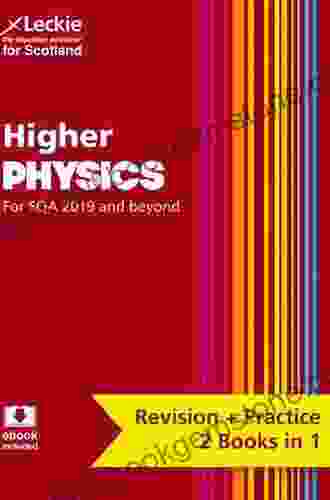
 Douglas Powell
Douglas PowellPreparation and Support for Teacher Assessment: Leckie...
Teacher assessment is an important part of...

 Derek Bell
Derek BellMaster the Basics of Japanese Grammar: A Comprehensive...
Embarking on your journey to master the...

 Edison Mitchell
Edison MitchellReasoning Ability Topic Wise Solved Papers For IBPS SBI...
The Reasoning...

 F. Scott Fitzgerald
F. Scott FitzgeraldA New Survey of the West Indies, 1648: Broadway...
Published in...
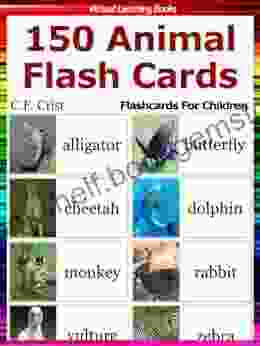
 Cooper Bell
Cooper BellPeekaboo Baby Toddler: 150 Animal Flash Cards for...
Are you ready to embark on...
5 out of 5
| Language | : | English |
| File size | : | 7434 KB |
| Text-to-Speech | : | Enabled |
| Screen Reader | : | Supported |
| Enhanced typesetting | : | Enabled |
| Print length | : | 25 pages |
| Lending | : | Enabled |



